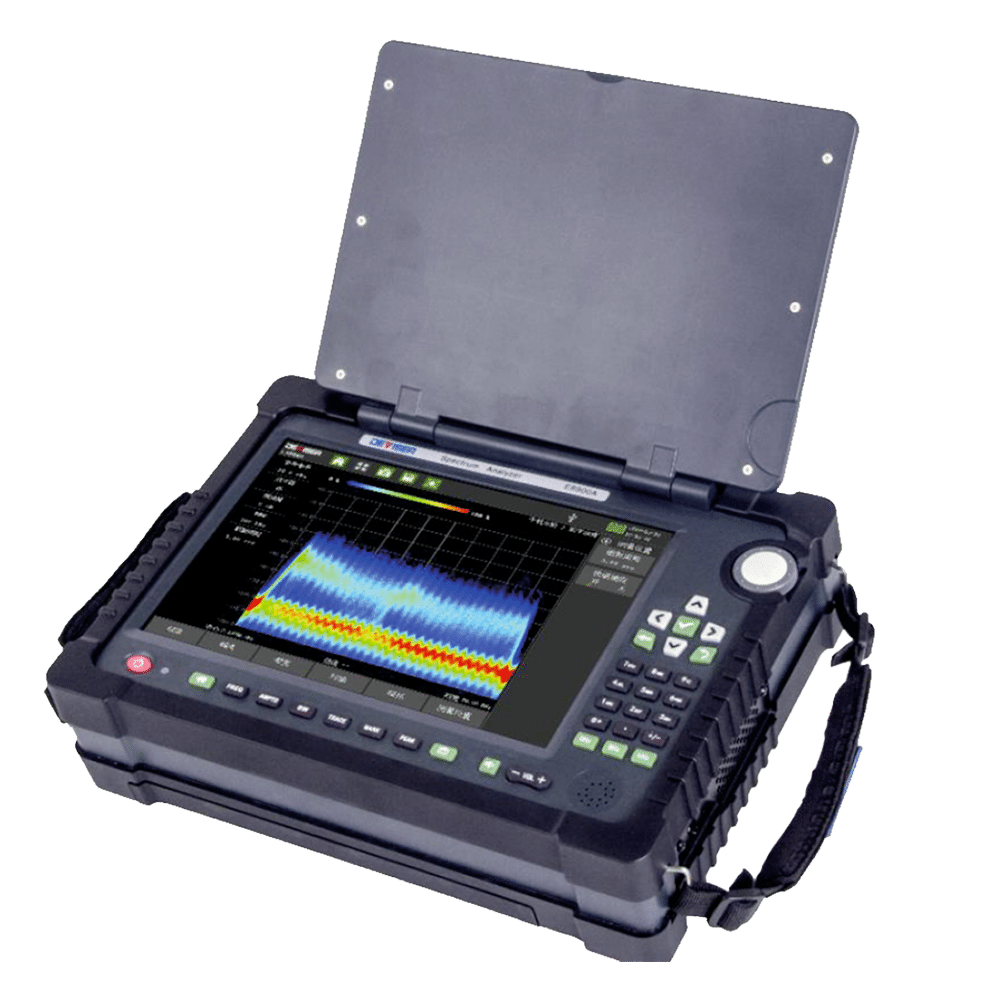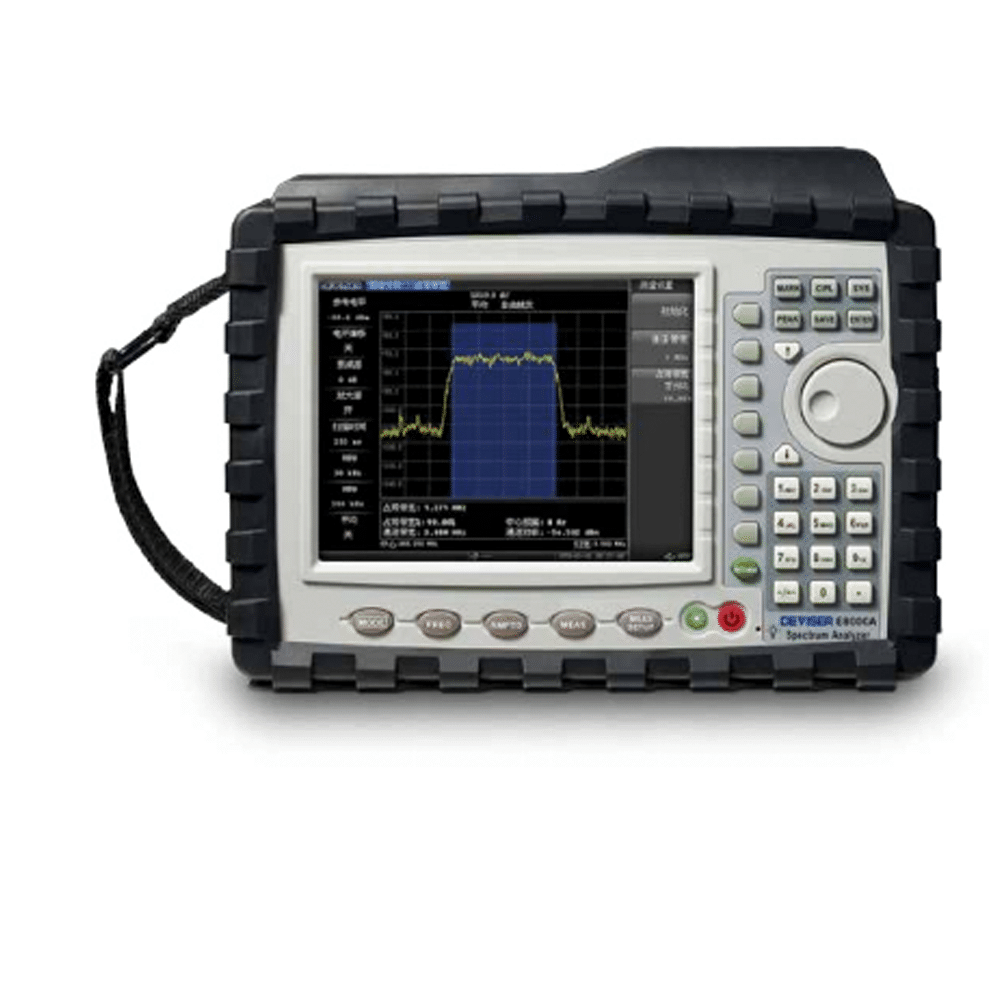Introducing interference testing
Radio Frequency signalling has been used for communications transmission since the early voice radio transmissions in 1900. These early communications systems used analogue transmission of audio using very large antenna masts that were located in positions that maximised the reach of the RF signal. This would involve avoiding built-up areas including towns and other areas of habitation and natural obstructions that may impact the reach of the broadcast transmission. The low number of transmitters and the spacing between them meant that few sources of interference would interrupt the RF transmissions.
Jump forward 120 years, and the modern RF environment is unrecognisable from those early days.
The explosion in mobile phones and devices has resulted in there being nearly 5 billion mobile RF transmitters around the world with extreme density in cities and other urban population centres. Two way RF communication has moved from being a high cost, specialised way to communicate to being so ubiquitous that some people have more than one mobile phone in their pocket.
In addition to this is the proliferation of WiFi devices. Initially providing laptop connectivity, WiFi is now in every IoT device in the home, potentially equipping every lightbulb, TV, front door and window with a WiFi transmitter that contributes to a huge overlapping RF environment.
In this new environment, sources of interference are everywhere, and the potential for the mobile network has never been greater. Hunting for, and mitigating the effects of interference sources is essential to the running of the network.
So what is interference hunting?
Interference hunting is simply the identification of a device that is causing RF emissions that affect the performance of the RF network. Once the source of the interference has been identified, then it can be either shut down or in some cases, have its configuration changed or shielding applied to mitigate the effects on the RF network.
Before starting interference hunting, it’s important to first be sure that there really is interference causing the problem. Then understand the characteristics of the interference so that the source of the interference could also be characterised, filtering down the types of sources. For example, understanding the frequency of the interference might show that Freeview transmissions were impacting 4G service within a small area, so applying a filter to residential premises could resolve this.
Locating the source is critical, and so a lot of the effort in interference hunting is spent by engineers moving around in the general area of the interference and making direction-finding measurements to point them in the direction of the interference source.
Key to the resolution of interference on the RF network is the spectrum regulation that a country has in place. The UK regulator Ofcom is responsible for the licensing of spectrum within the UK and any RF sources that licensees do not operate within a specific spectrum band are regarded as interference and the regulator can if necessary for the owner of an interference source to shut it down.
Steps to take
Before starting to identify the source of interference, you need to be sure that it really is interference that is causing any network problems, as there are other issues that may cause similar problems to the end-user. For example, intermittent calling issues caused also be caused by capacity problems on the backhaul network, or a misconfigured VLAN priority might cause voice traffic to be dropped in favour of data traffic. These other issues would exist internally within the network and therefore be easier to identify and then rectify than trying to find an external interference source, so it’s important that other issues are ruled out beforehand.
If there are still problems being reported that are believed to be RF interference related, then the first thing that needs to be done is to identify where the interference is roughly located. This can be determined be correlating the information already available such as concentrations of open end-user trouble tickets, monitoring systems identifying clusters of dropped calls or other service issues such as low data throughput or changes in the parameters recorded by the mobile base station itself such as changes in the signal strength received. The challenge can be holistically viewing these issues so that the source can be geo-located rather than trying to resolve them separately within each different network domain.
Once the general area has been identified, drive-testing can be carried out to further narrow down the location of the interference source. Drive testing uses vehicle-mounted test instruments to make RF test measurements over a large area quickly, efficiently identifying where engineers should focus their attention. Recent innovations such as drone-mounted test equipment can also be used to quickly identify the general location of interference sources.
The final step in hunting for sources of interference usually comes down to engineers taking portable RF test equipment into the field on foot and walking around the area, making measurements to identify the location of the source. Once a premises has been identified, the engineer can approach the owner of the premises and identify any specific RF emitter devices on the property that are causing the interference and work with them to stop those transmissions.
This is where RF regulation and standards come to the fore, as the devices that are causing the interference may be in breach of national RF standards and therefore the owner may be legally required to take action to rectify the situation.
Interference hunting tools
The critical tool for interference hunting is an RF spectrum analyser and antenna that can work across the required frequency range for the network and some overlap into the adjacent frequency ranges.
The spectrum analyser takes RF power measurements across the RF spectrum and displays these measurements in several different formats designed to help identify interference sources. One key aspect of the testing is the ability to measure and visualise the result over time. As some interference sources may only be present sporadically, a fast measurement time and the ability to save and monitor this is key to identifying fast-changing interference.
Using GPS positioning to correlate the results with the engineers’ physical local is essential to efficiently plot results and geo-locate the interference source.
In addition to the spectrum analyser, engineers will need an antenna to take the measurements. There is a choice herein that the antenna could be tuned to the frequency of the specific network band being used or be wideband and sensitive enough to make the measurements across the spectrum being used. In either case a directional antenna would be desired to aid with direction-finding. In this way, an engineer can identify the direction they should travel to approach the interference source.
As interference hunting will usually involve engineers taking the spectrum analyser into the field and taking measurements while walking the tools also need to be able to be hand portable, battery-powered and rugged enough to be used in the field and in varying environmental conditions.
Interference analysis
Undertaking the analysis of a suspected interference source helps with the identification of the source. Different sources produce different interference, and this enables the identification source through the analysis of the interference characteristics.
There are various ways that the spectrum analyser can visualise interference, and these different methods each aid in identifying RF interference sources.
At the most basic is that spectral display, this shows a graph of power levels received across the spectrum being measured. In cases of continuous interference, this identifies the frequency that the interference source is generating.
A lot of interference is not continuous and so is only detectable intermittently, in this case, a waterfall chart showing measurements taken over time is used. Investigating the source of interference over time also enables pattern analysis. For example, if there is an external event that coincides with the interference being present, then this is likely connected to the interference source. Examples of this may include a local resident turning on a faulty appliance at a regular time, resulting in interference being visible at specific times only.
Visualising interference over time
Types of interference
There are a huge number of potential interference sources, and many of them have a particular set of RF characteristics, so being aware of and familiar with these can be useful in locating a source of interference.
Harmonics.
Harmonics are spurious transmissions that are created when an RF device is transmitting. The device will transmit at its fundamental frequency, but may also generate RF emissions at other frequencies at the same time. These harmonic frequencies will be at multiples of the fundamental frequency. So for example, if a device is using the 1880MHz frequency, it may also have harmonics at 3760Mhz (1180 x 2) and 5640Mhz (1880 x 3). The strength of the harmonics will decrease the further they are from the fundamental frequency but they may also cause interference on other bands.
External rectification
Connected metals can create radiated signals that may cause interference. Where there are telegraph poles, metal fencing or mobile towers that are poorly bonded, these can create an interference source.
Devices from other countries
Where consumers have bought wireless devices from outside their own country, there is the possibility that these are designed for use in restricted spectrum bands within the UK. For example, common devices such as baby monitors bought overseas may use RF spectrum designated for mobile networks. While bought with the best intentions by their owners, these devices may operate in restricted bands and be in breach of regulation within the country,
Deliberate interference
In some cases, members of the public may operate signal jammers out of malice. In these cases, the owner of the device will probably target a specific application (e.g. GPS, WiFi) and be using this to intermittently cause disruption to local services. A jammer will require a high power transmitted to be effective so these will generally be easy to detect during interference hunting.
Interference hunting tools
Our range of RF Spectrum Analysers are suitable for interference hunting across a full range of wireless applications from WiFi in industrial settings to national 5G rollouts.

E8900A 5G Spectrum Analyzer
Frequency range: 9 kHz to 9 GHz
The E8900A 5G New Radio (NR) handheld spectrum analyzer covers the landscape of new wireless communication technology with all-new levels of flexibility and efficiency for construction and maintenance of 5G NR systems.
FDD-LTE or TDD-LTE signal demodulation analysis includes channel power, cell ID, 4G frequency- or time- division multiple-access signal analysis, sub-frame spectrum, and special sub-frame indicators.

E8600B Spectrum Analyzer
Frequency range: 9 kHz to 6 GHz
The E8600B Spectrum Analyzer provides all necessary measurement functions and performance to accurately characterize the signal environment in addition to clearing, detecting, identifying and locating signal interference in a lightweight, handheld instrument.
The E8600B enables testing of higher frequency communications sites and signals, such as the 5.8 GHz ISM band or point-to-point and mesh radio systems operating from 4.0 to 6.0 GHz.

E8400B Spectrum Analyzer
Frequency range: 9 kHz to 4 GHz
The E8400B Spectrum Analyzer provides all necessary measurement functions and performance to accurately characterize the signal environment in addition to clearing, detecting, identifying and locating signal interference in a lightweight, handheld instrument.
Supporting up to 4 GHz, the E8400B can detect GSM anf CDMA 2.0 signals.

E8000A Spectrum Analyzer
Frequency range: 9 kHz to 3 GHz
Your content goes here. Edit or remove this text inline or in the module Content settings. You can also style every aspect of this content in the module Design settings and even apply custom CSS to this text in the module Advanced settings.
Remove the interference affecting your network. Contact us now to trial our interference hunting spectrum analysers.

